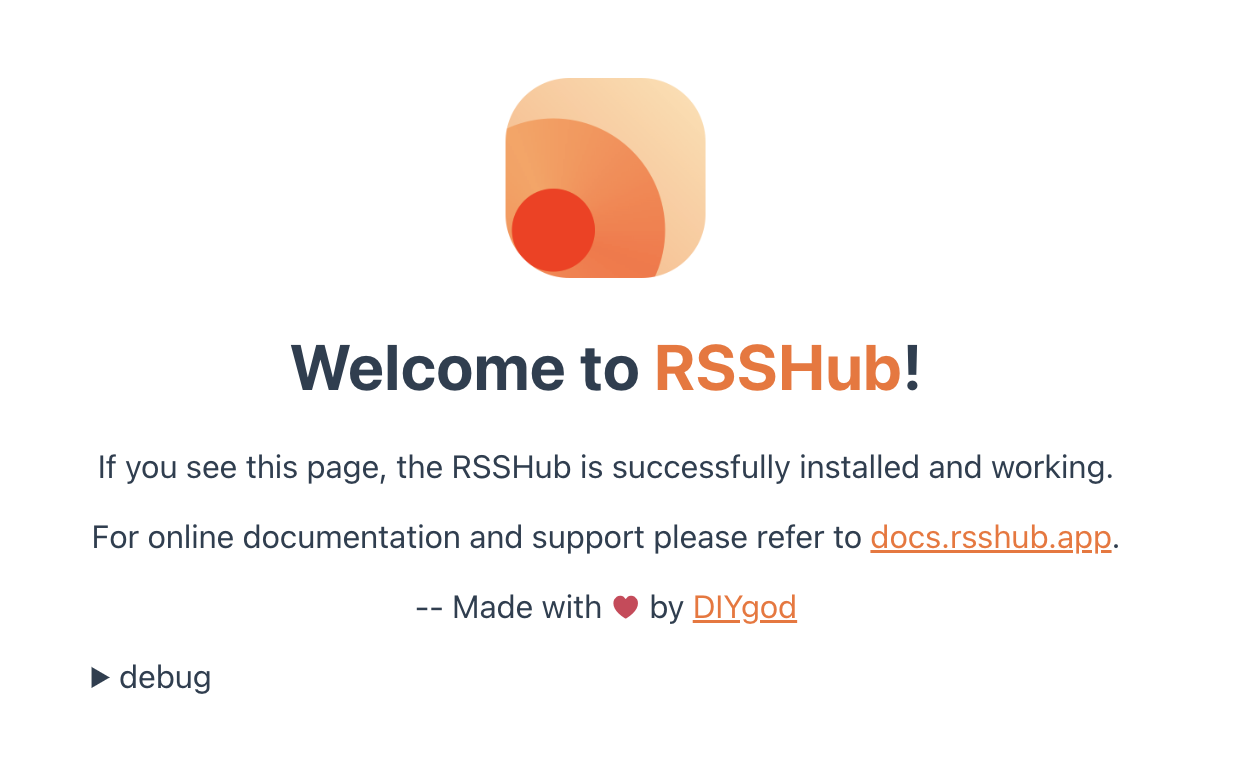如何用RSSHub创建自定义RSS源?
 wuzhiguocarter
wuzhiguocarter
RSSHub 是一个开源的、轻量的 RSS 生成器,它通过定义路由规则来抓取和生成各类网站的 RSS 源。而 RSSHub Radar 是一个浏览器扩展,它可以帮助你快速生成适合当前网页的 RSSHub 路由。
以下是使用 RSSHub Radar 的简要步骤:
安装 RSSHub Radar
安装浏览器扩展:
进入浏览器的扩展商店,搜索并安装 RSSHub Radar 扩展。
使用 RSSHub Radar 生成 RSS 源
访问你要监控的网页:
- 打开浏览器并访问你想要生成 RSS 源的网页。
启动 RSSHub Radar:
- 在网页加载完成后,点击浏览器工具栏上的 RSSHub Radar 图标。它会自动检测该网页是否支持 RSSHub 路由规则。
选择合适的路由规则:
- RSSHub Radar 会列出该网页支持的所有 RSSHub 路由规则。选择适合你的路由规则,点击生成对应的 RSS 源链接。
订阅生成的 RSS 源:
- 复制生成的 RSS 源链接,并在你喜欢的 RSS 阅读器中订阅。
示例
假设你想监控某个新闻网站的特定栏目,可以按照以下步骤进行:
打开目标网站的栏目页面,例如
https://example.com/news/technology。点击 RSSHub Radar 图标,查看可用的路由规则。
选择适合的路由规则,例如
/example/news/:category。复制生成的 RSS 源链接,例如
https://rsshub.app/example/news/technology。在 RSS 阅读器中订阅该链接。
自定义 RSSHub 规则
如果你发现 RSSHub 没有预定义的规则来监控你需要的网站,你可以考虑自己添加新的路由规则。以下是一个基本的步骤:
Fork RSSHub 仓库:
- 访问 RSSHub GitHub 仓库 并 fork 一份到你的账号下。
添加新路由规则:
根据 RSSHub 文档 添加新的网站路由规则。
路由规则通常位于
lib/routes/目录下。
测试你的规则:
- 本地运行 RSSHub,确保你添加的规则工作正常。
提交 Pull Request:
- 将你的改动提交回原始的 RSSHub 仓库,等待合并。
通过这些步骤,你可以轻松地利用 RSSHub 和 RSSHub Radar 来监控网页,并生成 RSS 源,比手动编写脚本要简单得多。
下面是一个详细的示例,展示如何为 RSSHub 添加自定义规则,以生成你需要的 RSS 源。
示例网站
假设我们要为一个虚构的新闻网站 example.com 开发自定义 RSSHub 规则,该网站有以下页面结构:
https://example.com/news- 新闻主页,包含最新新闻列表https://example.com/news/:category- 特定分类的新闻列表,例如:https://example.com/news/technology
开始开发
Fork 和 Clone RSSHub 仓库
首先,fork RSSHub 仓库 并将其克隆到本地:
git clone https://github.com/<your-username>/RSSHub.git cd RSSHub安装依赖
安装项目依赖:
npm install创建新路由文件
在
lib/routes/目录下为你的目标网站创建一个新的目录,例如example,并在其中创建一个news.js文件:mkdir lib/routes/example touch lib/routes/example/news.js编写路由规则
编辑
news.js文件,添加以下内容:const got = require('@/utils/got'); const cheerio = require('cheerio'); const { parseDate } = require('@/utils/parse-date'); module.exports = async (ctx) => { const category = ctx.params.category || 'latest'; const url = `https://example.com/news/${category}`; const response = await got(url); const $ = cheerio.load(response.data); const list = $('.news-item').map((_, item) => { item = $(item); const title = item.find('.news-title').text(); const link = item.find('.news-title a').attr('href'); const pubDate = parseDate(item.find('.news-date').text()); return { title, link, pubDate, }; }).get(); ctx.state.data = { title: `Example News - ${category}`, link: url, item: list, }; };这里我们使用
got来获取网页内容,使用cheerio来解析 HTML,并提取新闻标题、链接和发布日期。注册路由
编辑
lib/router.js文件,添加你的新路由:module.exports = (router) => { router.get('/example/news/:category?', require('./routes/example/news')); };本地运行 RSSHub
启动 RSSHub 以测试你的新路由:
npm start在浏览器中访问
http://localhost:1200/example/news/technology,应该可以看到生成的 RSS 源。提交代码并创建 Pull Request
如果你的自定义规则工作正常,可以将更改提交并推送到你的 fork 仓库:
git add . git commit -m "Add custom RSS rule for example.com news" git push origin master然后到 GitHub 上为原始的 RSSHub 仓库创建一个 Pull Request。
完整代码示例
lib/routes/example/news.js
const got = require('@/utils/got');
const cheerio = require('cheerio');
const { parseDate } = require('@/utils/parse-date');
module.exports = async (ctx) => {
const category = ctx.params.category || 'latest';
const url = `https://example.com/news/${category}`;
const response = await got(url);
const $ = cheerio.load(response.data);
const list = $('.news-item').map((_, item) => {
item = $(item);
const title = item.find('.news-title').text();
const link = item.find('.news-title a').attr('href');
const pubDate = parseDate(item.find('.news-date').text());
return {
title,
link,
pubDate,
};
}).get();
ctx.state.data = {
title: `Example News - ${category}`,
link: url,
item: list,
};
};
lib/router.js
module.exports = (router) => {
router.get('/example/news/:category?', require('./routes/example/news'));
};
通过这个示例,你可以学习到如何为一个特定的网站添加自定义的 RSS 规则。你可以根据不同网站的结构和需求调整代码,以满足你具体的需求。
Subscribe to my newsletter
Read articles from wuzhiguocarter directly inside your inbox. Subscribe to the newsletter, and don't miss out.
Written by

wuzhiguocarter
wuzhiguocarter
I am a senior software engineer working on DiDi.